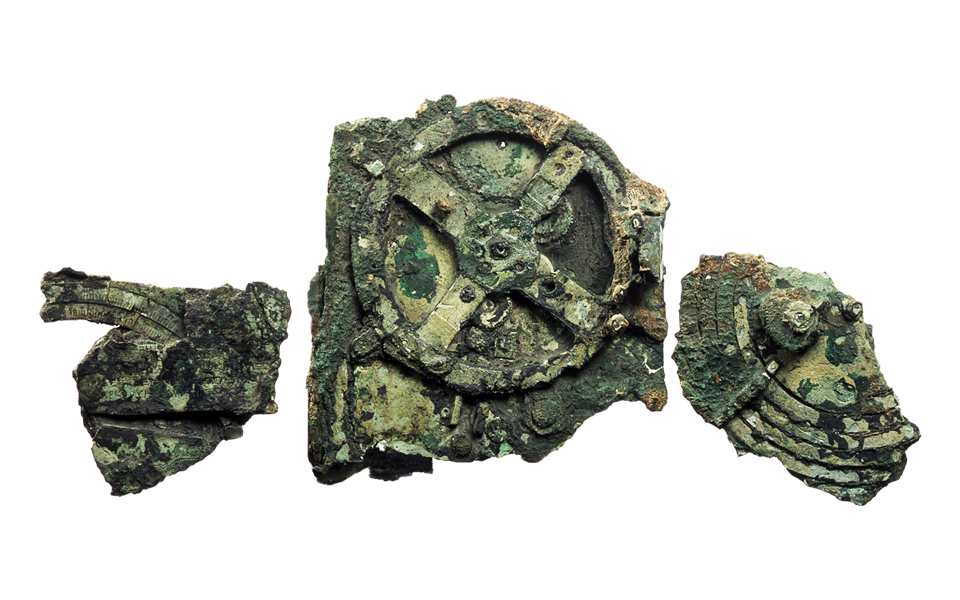When Amphipolis Was in Color
Reconstructing the lost polychromy and meaning…

The Antikythera Mechanism was a calendar of the sun and moon, showing the moon phases, sun positioning and the moon in the zodiac
© National Archaeological Museum, Athens
Visitors seeking to fathom the inscriptions on the Antikythera Mechanism huddled to the Historical Library of the Aikaterini Laskaridis Foundation on Thursday to listen to conclusions reached after twelve years of labor. Cutting-edge scanning equipment was used by international scientists trying to decipher 3,500 characters of text on the inside of the 2,100-year-old artifact that has puzzled archaeologists since it was first found off the southern Greek island of Antikythera.
In the past, it has been called an “ancient calculator” but there is more to the shoebox-size device with a complex gearwheel system of 30 intricate bronze gear wheels that meets the eye. Professor Alexander Jones at New York University, a team member in the research, says that it was actually a “philosopher’s instructional device”.
The results of the research show that the device was a calendar of the sun and moon, showing the moon phases, sun positioning and the moon in the zodiac. The Antikythera mechanism was able to predict the position of the planets and was able to make predictions as to when the next eclipse would take place. Lost in time, the next such device wouldn’t be created until 1,000 years alter.
“The Antikythera mechanism was able to predict the position of the planets and was able to make predictions as to when the next eclipse would take place”

Cutting-edge scanning equipment was used by international scientists trying to decipher 3,500 characters of text on the inside of the 2,100-year-old artifact
“It was not a research tool, something that an astronomer would use to do computations, or even an astrologer to do prognostications, but something that you would use to teach about the cosmos and our place in the cosmos,” said Jones. “It’s like a textbook of astronomy as it was understood then, which connected the movements of the sky and the planets with the lives of the ancient Greeks and their environment.”
New knowledge is based on the availability of texts with 1.2-millimeter-sized letters etched on the inside covers with x-ray scanning and imaging technology used to analyze these. “That’s a lot of detail for us because it comes from a period from which we know very little about Greek astronomy and essentially nothing about the technology, except what we gather from here,” he said. “So these very small texts are a very big thing for us.”
Astrophysics Professor Mike Edmunds of Cardiff University said, during the findings on Thursday, that the text was not a user’s manuel, but rather a long label to describe the device that was probably made in Greece between 200 and 70 BC. The team that began studying the texts have managed to read practically all of the fragments, however they hope that archaeologists revisiting the shipwreck will uncover more pieces for them to work on.
“It’s like a textbook of astronomy as it was understood then, which connected the movements of the sky and the planets with the lives of the ancient Greeks and their environment.”
Reconstructing the lost polychromy and meaning…
A nationwide survey highlights improved services,…
Four mysterious Bronze Age artifacts from…
The removal marks a rare moment…